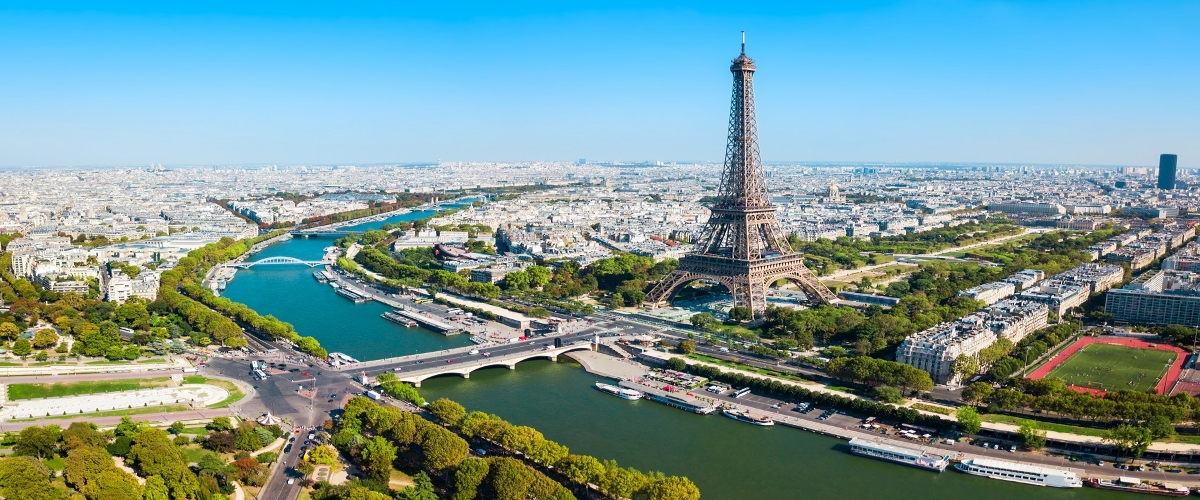As a global power, France has big sustainability ambitions. One of the leading members of the EU, the country aims to be among the frontrunners in the transition to clean energy, given the bloc’s goal to become the world’s first carbon-neutral continent by 2050.
It was in 1996 that the French government introduced the first auctions and tender processes for the expansion of renewable power with the goal of supporting investments in renewable energies.
The Pledge
Shortly afterwards, in the year 2000, the French Energy Regulatory Agency (CRE) designed the specific tender process. With the auction model the French government set itself an ambitious solar energy target: to double the country’s existing photovoltaic capacities by 2023 and to increase them fivefold by 2030.
Meanwhile, France has been focusing on developing wind energy, as well. At the beginning of 2020, when the latest version of the Multiannual Energy Programme (Programmation pluriannuelle de l’énergie (PPE)) was published, it became clear that France has increased its offshore wind tendering target from 6GW to up to 8.75GW by 2028. The revised PPE increases the intended operating offshore wind capacity from between 4.7GW and 5.2GW by 2028, to between 5.2GW and 6.2GW by 2028.
The country now plans to cover 33% of its gross energy consumption with renewable energy by 2030, with the priorities for action by the public authorities in the energy field set in order to achieve the objectives set by law:
- reduce greenhouse gas emissions by 40% between 1990 and 2030;
- greatly reduce final energy consumption (-20% in 2030) and in particular the consumption of fossil fuels (-40% in 2030);
- bring the share of renewable energy to 33% of gross final energy consumption in 2030;
- reduce the share of nuclear power in electricity production to 50% by 2035
The Projects
Several big government tenders in France have attracted media attention in the last couple of years. This is indicative of their significance for the wider public.
In May 2017, the country opened its onshore wind tender programme. Four years on, France is about to complete its eighth and final round of tenders under the current system. According to the latest reports from February this year, 15 projects had been awarded for a cumulative capacity of 519,7MW by the Ministry of Energy in the seventh round of tenders.
The 226-MW Parc Eolien Mont des 4 Faux wind project proposed by EDF Renewables and Windvision in Ardennes department and Canadian Boralex Inc’s 68-MW Parc Eolien de La Fort de Lanoue in Brittany were among the selected schemes and are the two largest ones in terms of installed capacity.
Then, the final round began in April. In it, projects will be awarded for a capacity of a further 925MW.
In the meantime, France has also been setting up infrastructure for offshore wind energy generation. As discussed above, the country has set itself a target to significantly grow its capacity in the area by 2028.
In May of this year, the CRE launched a tender for up to 270MW of floating offshore wind projects south of the Brittany coast. It is part of a larger procurement round planned by the French government for up to 750MW of projects off the southern coast of Brittany.
As well as wind energy, France is developing its solar energy capacity, too. Large renewable energy providers like Total, ENGIE, and Axpo have all won auctions as of late.
April of 2020 saw ENGIE and Total win a combined 370MW of solar projects during CRE 4’s seventh round of tenders for ground-mounted solar parks.
ENGIE was awarded a total of 235MW during these latest tenders within the French territories, in particular in Nouvelle Aquitaine, PACA, Grand Est, Normandy and Hauts de France.
At the same time, Total - through its wholly-owned affiliate Total Quadran - was awarded with 131MW of projects, in addition to another 5.6MW of solar in the French Overseas departments and collectivities.
Earlier this year, Axpo also cemented its position as a leader in solar energy. Through its subsidiary Urbasolar, the company won 11 projects amounting to nearly 34MW for plants in the area of agricultural greenhouses and logistics and industrial buildings. The win took Urbasolar’s installed capacity to over 900MW since the start of the tender model in 2012.
Coming Soon: TenderAlpha’s Verdict
Information about government tenders is rarely widely publicized in mainstream media. With the exception of some larger contracts as the ones discussed above, it is hard to know how many tenders have been launched and whether their number has been growing over the years.
TenderAlpha’s database contains public procurement contracts from over 50 countries (including the entire EU) covering the period since 2011. The availability of such database enables an accurate representation of the state of the public procurement market in any country or region.
In addition, our own green contract detection methodology has allowed us to compile a database of sustainable public contracts. That being said, TenderAlpha has the ability to provide concrete figures regarding the amount of tenders that can be considered green.
By doing so, we can assess whether the ambitions declared in the media by the governments are translated into a real increase in the number of green tenders.
We will shortly be presenting important figures concerning the public procurement process in France. This way we aim to shed light on the actual uptake of green procurement in the country, as shown by data collected exclusively from official government sources.
Among the figures we are going to present will be the share of green tenders out of the total number of public contracts launched in France since 2011, as well as a breakdown of the number of green contracts published per year.
